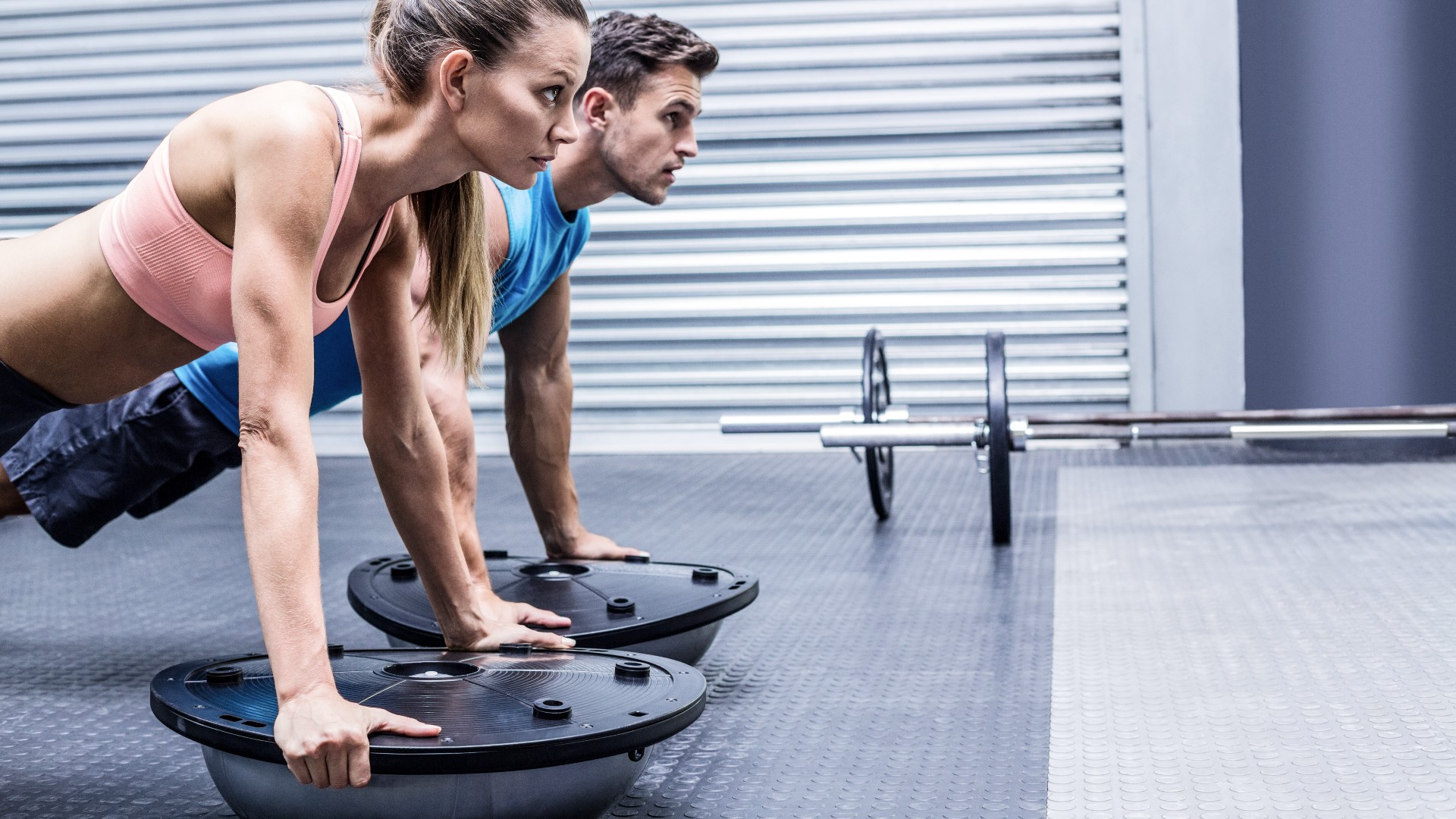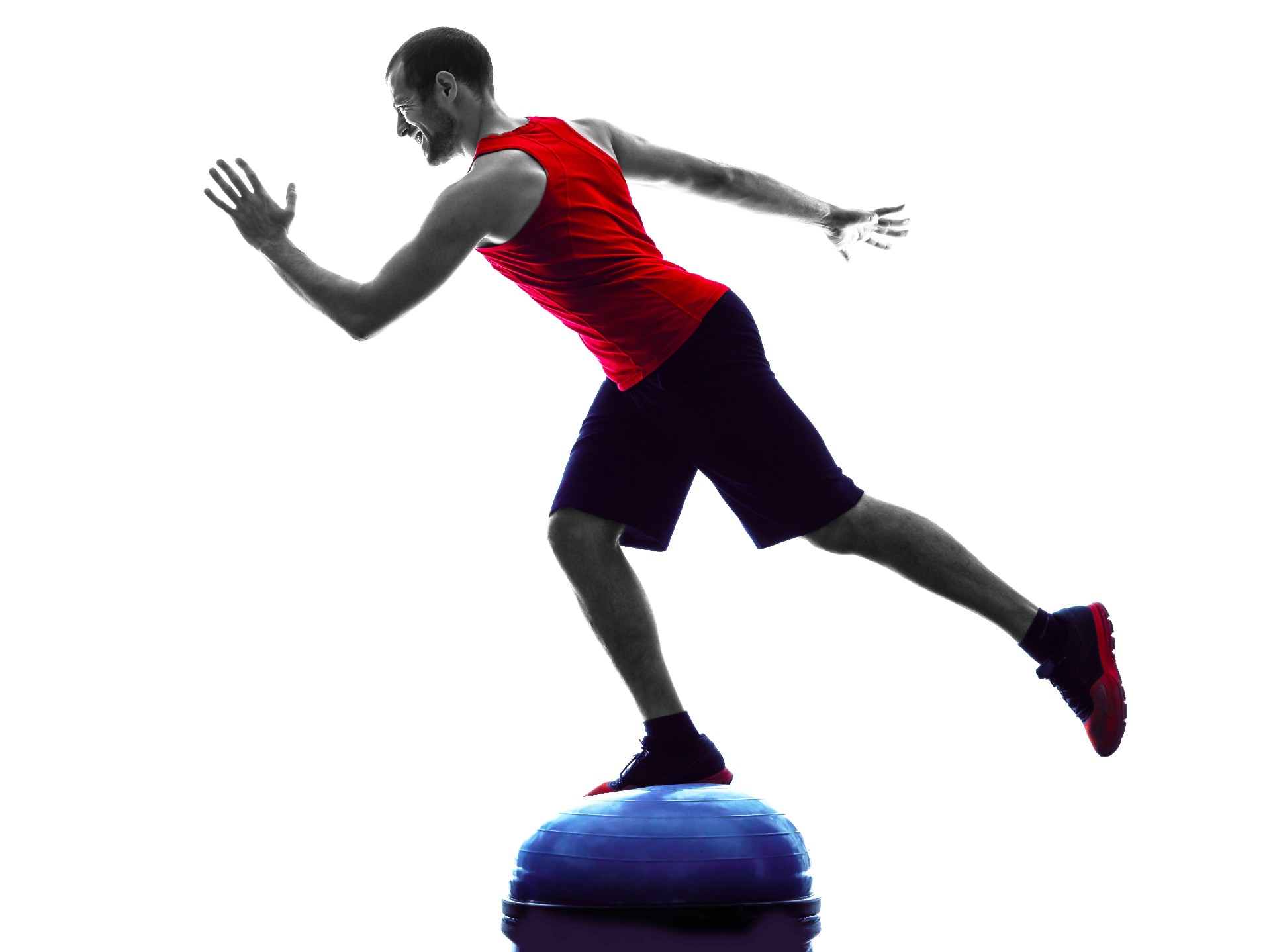
As a personal trainer, I think the balance trainer is the most underrated piece of gym equipment you're probably not using to build strength, stability and balance in your muscles.
Also known as the Bosu ball, the kit looks basic, but it’s brilliant for assisting with all functional training. That means it doesn't matter if you favor cardio over strength programs or agility over sports — adding one to your arsenal could strengthen your entire body and improve core stability, proprioception, coordination and balance.
That said, you'll need to be careful when using one, as they can take some getting used to. You can find balance trainers in most gyms, and they fit easily into home gym setups as part of the best home gym equipment for workouts. Below, I cover why people should use them more and an accessible yet challenging five-move full-body balance trainer workout to try.
What does a balance trainer do?
Balance trainers come in various shapes and sizes. Every design has a solid flat base and an inflated wobbly dome that’s challenging to stand on. But that’s the point because exercising on a balance board should never feel easy.
You can flip balance trainers flat-side or inflated side up, elevating basic exercises like push-ups, burpees and squats to work your muscles even harder. Board-side up places your muscles under far greater tension to keep the trainer stable, which also helps develop a stronger core and fatigues muscles.
In fact, coaches frequently use balance boards with their athletes as part of sports conditioning programs to improve agility, stabilization, strength and aerobic capacity.
Are balance trainers any good?
There’s a time and place for the best adjustable dumbbells or treadmills, but sometimes I find that basic is best. Balance boards are super affordable — and most importantly, they work.
Sign up to get the BEST of Tom's Guide direct to your inbox.
Get instant access to breaking news, the hottest reviews, great deals and helpful tips.
Think about the core strength you need during paddle-boarding. A balance trainer works the same — the wobbly surface created by the flexible dome means that exercises you’d usually do on the floor now require more muscles to recruit and work together to maintain balance.
As balance training famously engages your nervous system and muscles, you could expect to build better coordination and reaction times by improving communication skills between brain and body.

Moreover, the effort of maintaining your balance means you’ll activate and strengthen deeper and lesser-known muscles responsible for stabilization and support. That includes the rotator cuffs, responsible for shoulder stabilization and your deeper core muscles. Over time, better muscle recruitment could translate into strength gains for exercises like weightlifting or powerlifting.
It’s a no-brainer that the effects of balance training could reduce your risk of injury during daily activities. Alongside strengthening the major muscle groups responsible for posture, like your core and back muscles, it also develops stronger joints across your entire body.
How do you train with a balance trainer?
You can jump, step and balance your way to stronger muscles and joints, better flexibility and a more coordinated, agile body using this workout by balance training company BOSU.
The next time you’re face-to-face with a balance trainer, pick it up and try this 20-minute full-body workout.
20-minute BOSU full-body HIIT workout
During the workout, you’ll use the balance trainer two ways — board-side up and down. There are five exercises to tackle:
- In-out squat jumps
- Alternating V-crunch and V-sits
- Mountain climbers and push-up combos
- Bodyweight squats
- Toe taps
The workout combines bodyweight strength training with cardio exercises to increase your heart rate, burn calories and strengthen major muscle groups. The 20 minutes start with a quick warm-up, then you’ll move into three rounds of the five exercises, finishing with a guided cool-down.
Expect to target your legs, glutes, shoulders, chest, arms and core muscles and break a sweat. Keep your core engaged throughout, focusing on squeezing as many muscles as possible as you move.
The instructor performs the bodyweight squats with the balance trainer board-side up for an extra lower-body challenge. If you’re a beginner to balance training and haven’t worked out like this before, flip the trainer the other way for an easier option. During the mountain climber and push-up combinations, keep your shoulders stacked over your wrists and your bum and shoulders aligned.
In the video, the core work shows both hands down on the ground. If you’re familiar with balance training, you could try to lift your hands away throughout. But regardless of your fitness levels, always consult a physician if you’re starting a new exercise program or returning from injury, and stop if you experience any pain.
More from Tom's Guide

Sam Hopes is a level 3 qualified trainer, level 2 reiki practitioner and senior fitness writer at Tom's Guide. She is also currently undertaking her Yoga For Athletes training course. Sam has written for various fitness brands and websites over the years and has experience across brands at Future such as Live Science, Fit&Well, Coach, and T3.
Having worked with fitness studios like F45 and Virgin Active, Sam now primarily teaches outdoor bootcamps, bodyweight, calisthenics and kettlebells. She also coaches mobility and stretching-focused classes several times a week and believes that true strength comes from a holistic approach to training your body.
Sam has completed two mixed doubles Hyrox competitions in London and the Netherlands and finished her first doubles attempt in 1:11.

